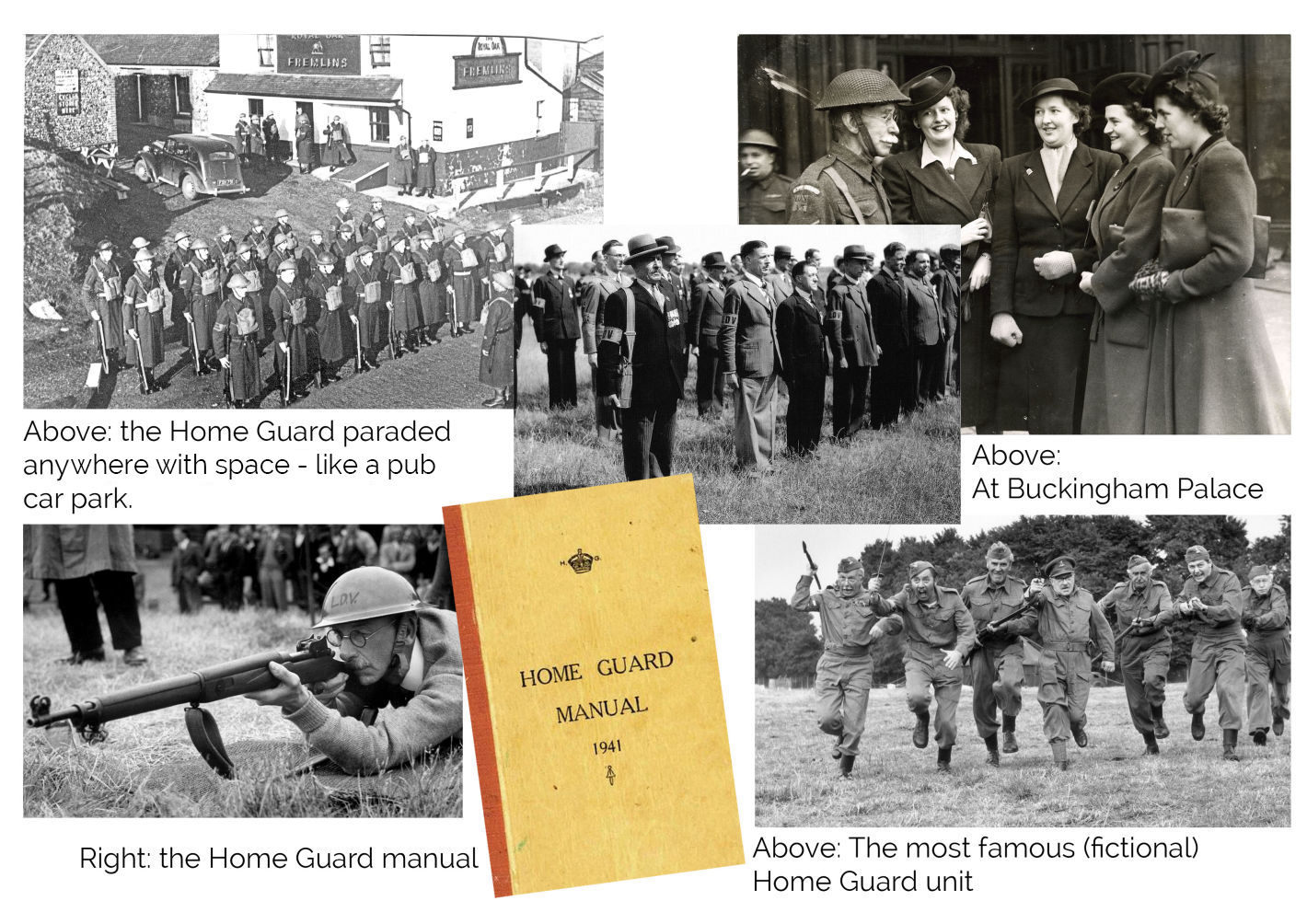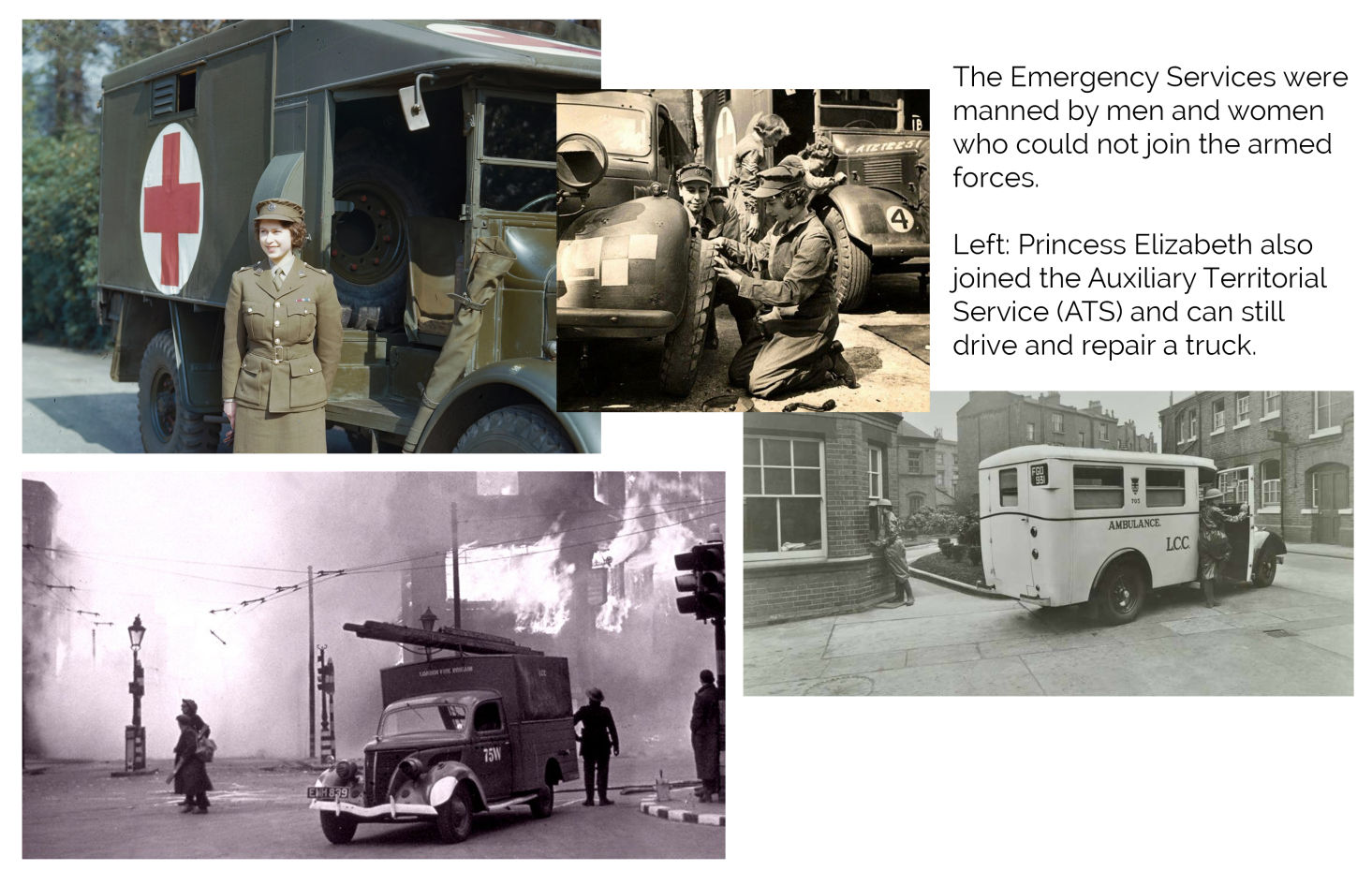
Civil Defence 2
The Home Guard
On 14th May 1940, Anthony Eden, Secretary of State for War, encouraged men aged 17-65 and unable to serve in the forces to join the Local Defence Volunteers. Within 24 hours, 250,000 men had registered and, by the end of June 1940, nearly 1.5 million had volunteered. Weapons were slow to materialise, due in part to the equipment losses at Dunkirk, so many initially improvised with brooms, umbrellas and golf clubs. In July 1940 Winston Churchill changed the name to ‘Home Guard’.
Here's the link to the episode of 'Dad's Army' and the establishment of the Home Guard (LDV):
https://drive.google.com/file/d/1sPQwYcCjaPGt1O71K2BikMS4if48AD6N/view?usp=sharing

The Emergency Services
As war broke out, the Emergency Services began to appeal for volunteers, their usual numbers depleted by military service. The Auxiliary Ambulance Service began recruiting, and Ennis Smith became the youngest ambulance driver aged 16.
The Auxiliary Fire Service (later the National Fire Service) was also created. Its members were usually too old or young for military service and most were unpaid part-timers. Initially perceived as ‘service-dodgers’, they became public heroes when the Blitz began.
Many police officers also were young men or reservists, so the government and the police authorities had to recruit volunteers to keep up the numbers. Reserve policemen, special constables and women officers were signed up. As well as normal law-keeping duties, they became responsible for checking on enemy aliens, pursuing Army deserters and assisting the rescue services during bombing raids.
A woman’s place?
As World War Two loomed, campaigns for female volunteers to fill men’s roles commenced. Although thousands volunteered, conscription became unavoidable and, in December 1941, the National Service Act (No 2) made conscription legal for women.
By September 1943, more than one million women had joined the Women’s Voluntary Service. They staffed field kitchens; ran nurseries and hostels; cared for evacuees; drove ambulances; organised canteens for those bombed out of their homes; and worked the land in the Women’s Land Army.
Women also joined the Women’s Royal Naval Service (the WRNS), the Auxiliary Territorial Service (ATS) and the Women’s Auxiliary Air Force (WAAF). Amongst other things these organisations manned searchlights, launched barrage balloons and maintained Royal Navy ships.
As the war ended, however, it was taken for granted that women would return to the home and there were mixed feelings as they were dismissed from their roles.
